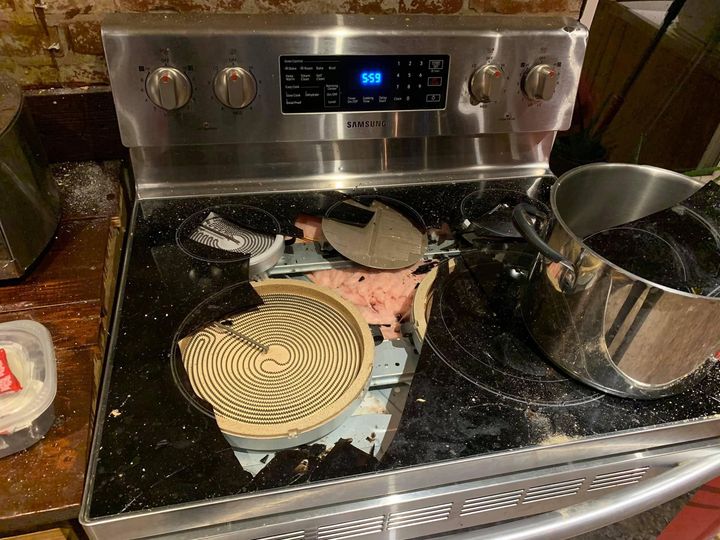
Glass top stoves are a favorite in modern kitchens, admired for their sleek, contemporary appearance and minimalist design. These stoves provide a flat, smooth surface that eliminates the crevices of traditional coil burners, making cleanup significantly easier. Their polished look creates an elegant kitchen centerpiece, but they come with unique risks that homeowners often overlook. One seemingly harmless mistake, if made repeatedly, can result in a shattered cooktop, turning your functional appliance into a costly safety hazard. Understanding this risk and how to avoid it will help protect your glass stove and keep your kitchen running smoothly.
The Appeal of Glass Top Stoves
The appeal of glass top stoves lies not only in their aesthetic charm but also in their practicality. They provide a smooth, seamless surface that makes wiping away spills and messes effortless. Unlike older stoves with coil or gas burners, there are no hard-to-reach areas where food or grime can collect, making glass cooktops the perfect solution for those who value both beauty and convenience. However, tempered glass, while durable, is not invincible. Under certain conditions, it can crack or even shatter, often leaving homeowners surprised and frustrated.
The Common Mistake: Placing Hot Lids on the Cooktop
One of the most common—and dangerous—mistakes people make is placing a hot lid face-down on the glass surface. While this may seem harmless, the action can trigger a vacuum seal that places significant stress on the glass. Here’s why it happens: when a hot lid is placed on the cooktop, the heat becomes trapped between the lid and the glass surface. As the stove begins to cool, the trapped air creates a pressure difference, forming a vacuum seal that causes the lid to stick tightly to the glass.
How the Vacuum Seal Leads to Shattering
This vacuum seal can lead to a dangerous pressure buildup. As the glass cools and contracts, the pressure difference increases, resulting in stress on the cooktop. Over time, or sometimes even immediately, this stress causes the glass to crack in a spiderweb pattern. These cracks may start small but quickly spread, compromising both the stove’s appearance and its overall structural integrity. While tempered glass is designed to handle heat and minor impacts, the vacuum effect and trapped pressure can exceed its limits, leading to a costly and hazardous outcome.
The Dangers of a Cracked Glass Cooktop
A cracked glass cooktop is not just a cosmetic issue—it’s a serious safety risk. First and foremost, a damaged glass surface can completely shatter when subjected to additional heat or pressure, sending sharp glass shards flying. These shards pose a significant danger to anyone nearby, increasing the risk of cuts, burns, or other injuries. Additionally, cracks can disrupt the stove’s heating functionality. Uneven surfaces lead to inconsistent heat distribution, resulting in poor cooking performance. Worse still, cracks can expose the stove’s internal electrical components, creating the possibility of short circuits or even kitchen fires.
Preventing Damage to Your Glass Top Stove
The good news is that preventing damage to your glass top stove is simple with a few mindful habits. To avoid the risks of a vacuum seal, never place hot lids directly on the cooktop. Instead, always place lids on a heat-resistant trivet, cooling rack, or a flat countertop. This minor adjustment eliminates the risk of trapped heat and pressure buildup, saving you from potential disaster.
Using Compatible Cookware
In addition to avoiding the hot lid mistake, you can take further steps to protect your stove. Always use compatible cookware with flat, smooth bottoms that won’t scratch the glass surface. Pans with warped or rough bottoms can create uneven heat or leave marks that weaken the glass over time. If you use heavy cookware like cast iron, be extra cautious. Lift heavy pots and pans rather than dragging them across the surface, as even small scratches can compromise the stove’s durability.
Regular Cleaning and Maintenance
Regular cleaning is equally important for maintaining the integrity of your cooktop. Wipe the surface clean after each use to remove food particles, grease, and residue. Even tiny crumbs can become abrasive under cookware, leading to minor scratches that grow into bigger problems. Use non-abrasive cleaning materials designed specifically for glass top stoves, and avoid harsh scrubbers like steel wool that can cause further damage.
What to Do If You Notice a Crack
If, despite your best efforts, you notice a crack on your glass top stove, stop using it immediately. Continuing to cook on a cracked surface can worsen the damage and increase the risk of a complete shattering. Contact a professional technician to assess the damage and determine whether a repair or replacement is necessary. Addressing the issue promptly ensures your kitchen remains a safe environment for cooking and daily activities.
Conclusion
Glass top stoves offer a blend of elegance and functionality that enhances any modern kitchen. However, they require mindful usage to prevent damage and ensure longevity. By avoiding common mistakes like placing hot lids directly on the surface, using appropriate cookware, and maintaining regular cleaning habits, you can protect your glass cooktop from cracks and shattering. Staying informed and attentive to these details will keep your kitchen both beautiful and safe for years to come.





